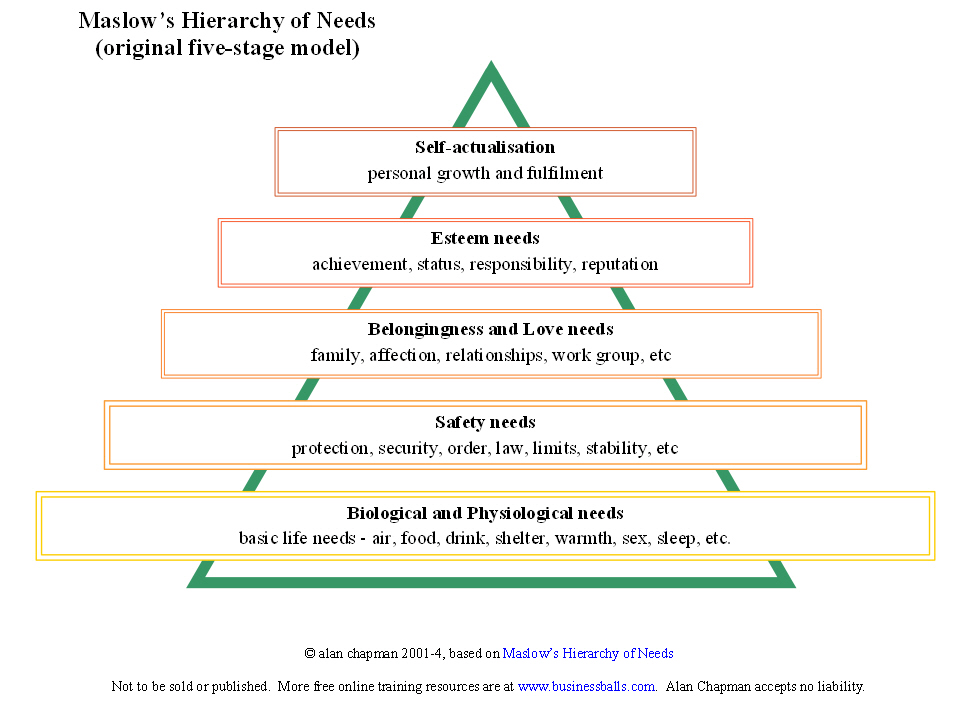 Abraham Maslow was born in New York in 1908 and died in 1970. He, was a professor of psychology at Brandeis University, founded humanistic psychology and created Maslow’s Hierarchy of Needs theory which remains today for understanding human motivation, management training, and personal development.
Abraham Maslow was born in New York in 1908 and died in 1970. He, was a professor of psychology at Brandeis University, founded humanistic psychology and created Maslow’s Hierarchy of Needs theory which remains today for understanding human motivation, management training, and personal development.According to his theory, Hierarchy of needs have five-stage levels pyramid diagrams and models, needs must be satisfied in the given order. Each of us is motivated by needs. Once a need is satisfied, the person moves up to the next. When the lower order needs of physical and emotional well-being are satisfied, we concerned with the higher order needs of influence and personal development.
Conversely, if the things that satisfy our lower order needs are swept away, we are no longer concerned about the maintenance of our higher order needs.
Levels 1 to 4 are deficiency motivators; level 5 is growth motivators and relatively rarely found. The preventing of needs is usually a cause of stress, and is particularly so at level 4.
However people and motivation are more complex. So it is broadly true that people move up (or down) the hierarchy, depending what is happening to them in their lives.
For example, a rich man who grown up very poor can still be concerned about feeding(level 1), shelter(level 2) and even the meaning of life(level 5), even if he is living abundantly.
On the other hand, under certain circumstances, a person who trying to satisfy their needs at belongingness(level 3) seems able to self-actualise(level 5) by selflessly helping others, and at the same time begins to satisfy their own needs about belongingness and self-esteem.
Maslow’s theory is not a catch-all, but it does remain useful framework for analyzing and trying to understand the complications of human behavior and growth.
Especially in the workplace, it is a wonderfully simple and elegant model for understanding many aspects of human motivation.
http://www.businessballs.com/images/maslow_hierarchy.htm
http://www.businessballs.com/images/maslow_hierarchy.htm
( ←click to see the big size)

1970s adapted Cognitive needs( knowledge, meaning, etc.), Aesthetic needs(appreciation and search for beauty, balance, form, etc.) between 4 and 5.(after Maslow's death)
1990s adapted Transcendence needs(helping others to achieve self actualization.) behind 5
* Although Maslow referred to the 'Cognitive', 'Aesthetic', and 'Transcendence', he didn’t include any of these as additional stages in the Hierarchy of Needs.
No comments:
Post a Comment